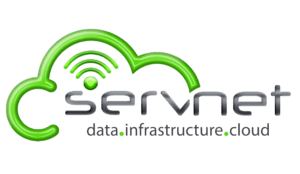Ensuring Safe and Secure Software Supply Chain
With digital transformation changing the way businesses function, software has become increasingly important for organizations. However, it has also become a prime target for cybercriminals. Incidents such as the SolarWinds hack have made us realize the significance of software supply chain security. As a CIO, you must take necessary measures to secure the digital assets of your organization. In this article, we’ll discuss what is software supply chain security, why it’s important, and how you can secure it.
What is software supply chain security?
Software supply chain security is the process of securing the software development cycle from inception to deployment. The software supply chain includes all the components that are involved in building, testing, and distributing software. It involves the security of software suppliers, contractors, and third-party vendors. Software supply chain security is essential to protect the software from malicious activities like hacking, espionage, and sabotage and to prevent unauthorized access to sensitive information.
Why is it important?
The recent SolarWinds hack has shown how software supply chain security is critical to an organization’s security posture. In this incident, attackers gained access to a software supplier’s system and injected malware into the software updates, which were distributed to thousands of SolarWinds clients. The malware went undetected and gave attackers access to sensitive information. This incident highlights how important it is to secure the entire software supply chain to prevent such attacks.
How to secure the software supply chain?
1. Vendor management: One of the critical ways to ensure software supply chain security is to have a robust vendor management program. This program should include background checks on vendors, regular conversations with them to assess their security maturity, and vendor risk assessments.
2. Code signing and digital certificates: Digitally signed code certificates are a crucial security tool that ensures code authenticity. Code signing enables the end-users to verify the code’s origin, detection of any changes to the code, and verification of the software’s integrity. Organizations need to ensure that they have a robust system to manage these certificates and enforce them throughout the software development process.
3. Secure software development process: Organizations need to ensure that the software is developed securely. They need to follow rigorous testing, debugging, and securing procedures and enforce strict controls on software development environments and tooling to prevent unauthorized access.
4. Continuous monitoring: Organizations should continuously monitor their software supply chain to detect any security breaches or anomalies. This monitoring should include people, processes, and technologies that are involved in the software supply chain.
Conclusion:
In conclusion, software supply chain security is critical to protect an organization’s valuable digital assets. To secure the software supply chain, organizations should implement a solid vendor management program, enforce code signing and digital certificates, develop software securely, and continuously monitor their software supply chain. As a CIO, it’s your responsibility to ensure that your organization’s software supply chain is secure. It’s a constant effort that requires a comprehensive approach and a solid security plan. The only way to ensure the safety and security of your software is to identify the weaknesses early and take proactive steps before an attack occurs.





